The Fighter_Literary Essays Read online
Page 2
With nothing natural remaining, society is now divided into the industrialised masses, ‘a poor blind, disconnected people with nothing but politics and bank holidays to satisfy the eternal human need of living in ritual adjustment to the cosmos’,21 and an intellectual elite whose exclusive interest is the cultivation of their arid personalities. ‘Now men are all separate little entities. While kindness is the glib order of the day … underneath this “kindness” we find a coldness of heart … Every man is a menace to every other man … Individualism has triumphed.’22
Lawrence, in short, was anticipating the thinking of those anthropologists (Louis Dumont, for example) who would see the passage from traditional to industrial society as a move to a situation where relationships would inevitably be characterised by conflict. With the old ordering of the world gone, the search was on for some new authority that might transcend mere individual willpower.
Writing in the grim years of World War One, contemplating wholesale slaughter across the Channel, suspected – thanks to his pacifism and his German wife – of being a spy, reduced to poverty, it wasn’t difficult for Lawrence to imagine that doomsday was at hand. A futuristic note began to creep into his work. Old codes of behaviour were irrelevant, or at best a weapon to use against those still gullible enough to respect them. Real authority was conspicuous by its absence. The opening of the novella The Fox (written, though not published, in 1918) is typical: two young women are sitting in their lonely house on the farm that inexplicably and without any experience they have decided to run. Comes a knock at the door. ‘Hello?’ Immediately one of the women picks up a gun: menace, conflict.
In the event, it is only a returning soldier who imagined that his grandfather still owned the place. The women are aware that according to the rules of years ago, the man ought to go and find a bed in the village. Instead they offer to put him up. The villagers will gossip, but who cares? After only a few days the soldier abruptly asks one of the women to marry him. The reader, like the woman, is disoriented by the lack of preamble. ‘Why shouldn’t I?’23 is the man’s constant refrain. There are no rules. He likens his stalking of the woman to his hunt for the fox that has been disturbing the farm animals. Even courtship is conflict.
If English society really was in the state Lawrence described, then of course it had to be saved, or destroyed. Lawrence wasn’t sure which. Saved by being destroyed perhaps. In any event something radical was required and where else could it start but with the one-to-one relationship? Here, sex was crucial. Sex was the single thing that might put man and woman, perhaps man and man too, in touch with the deeper forces of nature. It thus became necessary to narrate sexual encounters in candid detail, to follow the interplay between psychology and sensuality, the surrender, or refusal to surrender, of the frantic individual mind.
Very soon Lawrence began to reverse the biblical sense of the verb ‘to know’ in reference to sex. Rather than ‘knowing’ another, a positive sexual encounter became an ‘unknowing’, a shedding of self in oneness. The values he hated, Lawrence was aware, were encoded in the language. He would have to do battle with that too. ‘Gudrun lay wide awake, destroyed into perfect consciousness’24 he says in Women in Love when one couple’s lovemaking has been nothing more than two wilful individuals rubbing against each other. ‘They could forget perfectly’25 he says of the effect of his preferred kind of sex. Standard syntax and lexical values are attacked, reversed, regenerated. Writing The Rainbow Lawrence declared that it was ‘a novel in a foreign language I don’t know very well.’26
But if the goal was ‘unknowing’, why engage in all this speculation? With Lawrence the intellect is always constructing its own defeat. ‘Don’t ever mind what I say’ he writes in 1913. ‘I’m a great bosher and full of fancies that interest me.’27 The novel, in so far as a story must be grounded in reality, open to incident and multiple interpretation, becomes the vehicle that will disarm his dogmatic theorising, a weapon against himself. ‘Never trust the artist, trust the tale’28 he says.
On the other hand, Lawrence really did want to sort out the question of how a man and woman should behave once they had succeeded in shedding their personalities in sex; the problem being that the society around them was not a traditional one in which such relationships might flourish. What was needed then was a favourable micro-community. Again and again, in novels and life, Lawrence mooted the project of ‘a few men with honour and fearlessness’29 sailing the South Seas or working the land. Or, if that couldn’t be arranged – and it never could – he might at least have one male friendship based not on talk and opinions, but on a physical and permanent bond, something that would provide context for the marriage between man and woman. To bemused friends Lawrence proposed a Blutbrüderschaft, an eternal friendship that would survive complete frankness, assert stability despite conflict. But Lawrence’s frankness was notoriously brutal. ‘You are a dirty little worm’30 he wrote to Middleton Murry, perhaps the most serious candidate for blood brother. Not surprisingly, no one came on board.
Meantime, despite their sexual union, man and woman continued to hold different opinions. He would not be bullied, Lawrence yelled at Frieda. She would not be bullied either. They fought bitterly. Lawrence appreciated the comedy in this, the bathos of petty domestic wrangling after the mind-altering sensual experience, the high-flown rhetoric of social regeneration. ‘It is the way our sympathy flows and recoils that really determines our lives’31 he decided. By the time he was writing Women in Love this was the rhythm of the novels: the genius lies not in any one scene, and certainly not in the overall form, but in the ‘flow and ebb’,32 the constant shifts of tone, biblical apocalypse, sitting-room knockabout.
In 1915 The Rainbow was banned for obscenity. ‘I curse my country with my soul and body’33 Lawrence announced. America, he decided, was the place for him. And he began to write Studies in Classic American Literature, a book of megalomaniac ambition which offers brilliant insights into, for example, Fennimore Cooper’s wish-fulfilment in fantasised friendships between white and native Americans, or, again, Hawthorne’s ambivalent presentation of moral purity in The Scarlet Letter.
Of course many critics have written perceptively on the literature of another nation without ever visiting it, but what is astonishing about the Studies is Lawrence’s aggressive confidence, already hinted at in the book’s provocative title (many at the time would have seen the collocation of ‘classic’ with ‘American’ as oxymoronic), that living as he then was in a remote Cornish village he could grasp not only the essence of this or that author, but the relationship between their writing and the whole dynamic of American history, in short what made these writers ‘classically’ American.
As always, the book’s style is characterised by Lawrence’s willingness to offend. Opening with a claim that the original American vision of freedom was nothing more than the escaped slave’s eagerness to be rid of a master, he gives us a paragraph that would not seem inappropriate to the present debate about the West’s right to impose democracy on every corner of the world:
Men are free when they belong to a living, organic, believing community, active in fulfilling some unfulfilled, perhaps unrealised purpose. Not when they are escaping to some wild west. The most unfree souls go west, and shout of freedom. Men are freest when they are most unconscious of freedom. The shout is a rattling of chains, always was.34
In 1917, just when Lawrence had decided he must go to America to assist in turning this negative freedom of escape to the positive freedom of the ‘believing community’, the British authorities withdrew his passport. He was a possible German sympathiser. In the event it was 1919 before he was able to leave England, never to return except for brief visits.
At this point the writer’s story is picked up in the most attractive of recent Lawrence biographies, Philip Callow’s Body of Truth: D. H. Lawrence – The Nomadic Years, 1919–1930. Despite the rich detail, a pattern rapidly emerges. Always obliged to count the pennies, sufferin
g from pneumonia, malaria, tuberculosis, Lawrence travels from Italy to Ceylon, to Australia, New Mexico and Mexico in search of communities still in touch with the natural world, still observing older hierarchies and accepting traditional authorities. Wherever they go, he and Frieda seek to establish that small benevolent group of like-minded folk that in some modern way might offer the vital sustenance for their marriage that Lawrence feels is unavailable in mechanised, industrial England.
As it turned out, the only thing that did not disappoint was the landscape, the flora and fauna. For however eager he was to be impressed by pre-modern communities, Lawrence’s unsentimental clear-sightedness never failed him. After long observation of the native Indian tribes of New Mexico, he concluded: ‘The consciousness of one branch of humanity is the annihilation of the consciousness of another branch … And we can understand the consciousness of the Indian only in terms of the death of our consciousness.’35 The impasse is dramatised in the story ‘The Woman Who Rode Away’, where a dissatisfied American wife rides off to live with an Indian tribe, only to find herself drugged and sacrificed to native gods in a fertility rite.
In Mexico, meanwhile, so abject, as Lawrence saw it, was the fate of the indigenous people under an alien Christianity, that he wrote a novel describing the rise of a new, local religion that might give hope and positive freedom to the Mexicans. The Plumed Serpent mixes Lawrence’s flair for observation and description with a tone that is visionary, even apocalyptic. Depending on what one is after in Lawrence, this is the best or the worst of his books. Certainly it is the one where Murry’s claim that Lawrence’s real aim was ‘to discover authority’ makes most sense.
But the perplexity generated by the peoples he visited was as nothing to Lawrence’s puzzlement with the problems of forming an ideal community of his own. In Living at the Edge: A Biography of D. H. Lawrence & Frieda von Richthofen, Michael Squires and his wife Lynn Talbot set out to offer a biography of the marriage. What emerges, though the authors never quite say as much, is Lawrence’s one truly massive blind spot in his personal life: while he and Frieda thought of themselves as building a beneficent micro-community, they were in fact seeking in the company of others the friction necessary for keeping their own relationship alive. Ever since Lawrence had taken his wife away from her first husband, their love always fed on the tension provided by a third and interested party. They almost never lived alone.
Middleton Murry and his wife Katherine Mansfield, the poet Witter Bynner, the painters Esther Andrews and Dorothy Brett and the journalist Mabel Dodge Sterne (later Luhan) were among scores of friends invited to live with or near the Lawrences. Obliged to witness the couple’s savage, often physically violent marital arguments, they soon found themselves taking sides, becoming confidants, combatants, in some cases even imagining themselves possible future partners of one or the other. But no sooner did a third party presume too much, than he or she was brutally dismissed. Very soon they would be reading unflattering descriptions of themselves in Lawrence’s next book. In response, many wrote their own accounts of the experience, all mixing venom, affection and incomprehension. Such was Lawrence’s utopia. As a publicity machine for his work, it was extremely effective.
Accused of clumsy repetition in the prose of Women in Love, Lawrence came up with the famous response that ‘every natural crisis in emotion or passion or understanding comes from this pulsing, frictional to-and-fro which works up to a culmination.’36 But this appeal to the artist’s mimetic function was actually something of an afterthought. Immediately prior to this and rather more belligerently, Lawrence defended his style thus: ‘The only answer is that it is natural to the author.’
So what was ‘natural’ to this author? Fighting. ‘Whoever reads me will be in the thick of the scrimmage’37 Lawrence wrote. Critics take this to mean that he was eager to draw us into the mess of life intensely lived. This is true. But the most urgent scrimmage is between author and reader.
What kind of fight is it and where does it lead? In Women in Love, Birkin, the character who most resembles Lawrence, invites his friend Gerald to enter into a Blutbrüderschaft. Gerald refuses, but he does agree to wrestle, naked, with Birkin. Needless to say, it is Birkin who chooses the form of combat and teaches Gerald how to fight according to his rules. Gerald is physically stronger, but Birkin is subtle, with an iron will. Nobody wins. At the end both men are so exhausted they fall into a trance, ‘quite unconscious’,38 but with Birkin lying on top.
This is the experience Lawrence would like his readers to have at the end of his books. This is the purpose of that rhythmic, seductive, irritatingly repetitive style. It leads us to what can best be described as a catharsis of exhaustion. For the weariness of exhausted combatants is the only oneness, the only brief overcoming of conflict that Lawrence can imagine in the modern world. In her autobiography, Frieda wrote: ‘We fought our battles outright to the bitter end. Then there was peace, such peace.’39
In 1925 Lawrence suffered his first lung haemorrhage in Oaxaca, Mexico. In a fit of combative energy, between 1926 and 1928 he produced three different versions of Lady Chatterley’s Lover, proud that his last novel was guaranteed to prove a monumental scandal. Meantime, in a desperate effort to impose authority, he refused to admit that he had tuberculosis, as if belligerent denial could determine the truth. Shortly after his death Frieda and the relatives began to fight over the estate. Then there was a tussle over the future of his ashes. To avoid their being stolen Frieda had them set in cement in a little shrine in Taos. An image of the phoenix was placed on top. Lawrence would rise again from the critical conflagration that was about to begin. Art or no art, nothing, life had taught him, is more seductive than a fight.
Gardens and Graveyards
* * *
[Giorgio Bassani]
IN THE AUTUMN of 1943, 183 members of the Jewish community of Ferrara, a small town in the north-east of Italy, were rounded up, imprisoned and deported to concentration camps in Germany. Only one returned. This atrocity is the grim premise behind almost all of Giorgio Bassani’s narrative fiction. He was twenty-seven at the time and had grown up in that community.
Yet the Holocaust as such is never the subject of Bassani’s writing, nor is he interested in elaborating a personal denunciation of anti-Semitism or Fascism. There appears to be no political agenda driving his work nor any sensationalism. Rather, his aim is to have life, as he sees it, emerge within the frame of those special circumstances that prevailed in Italy, and in particular in his hometown of Ferrara, in the years of his adolescence and early adulthood.
And life, as Bassani sees it, is complex, rich, comic and very dangerous. Above all, individual psychology and group dynamics can never be neatly superimposed on the great ideological divides of the time. This is the source of the all-pervasive irony in his writing. In ‘A Plaque in Via Mazzini’, a short story that appeared in 1956, Bassani writes about that one Jewish deportee who did return to Ferrara from Nazi Germany. All his close family killed by Fascism and Nazism, his own health destroyed, Geo Josz nevertheless has only contempt for the anti-Fascist partisans who have taken over his lavish palazzo in the town centre, and very little time either for his optimistic Uncle Daniele with his hopes for world democracy and universal brotherhood. No, the only person whom the anguished Geo is eager to see on arriving home is his Uncle Geremia, a man whose business contacts and enthusiastic participation in the Fascist Party have allowed him to go on playing bridge with the local shopkeepers’ association right through the war. The fact is presented more as a mystery than a criticism. Geo, eventually, goes mad with grief.
The Garden of the Finzi-Contini, however, is first and foremost a love story and an achievement of a quite different order from anything else Bassani wrote. The action of this largely autobiographical Bildungsroman is set in the years immediately before the war and since we are told in the opening pages what the later fate of many of the characters will be, and in particular of the tragic end that awaits the s
tory’s beautiful and elusive heroine, Micòl Finzi-Contini, the tension of the novel takes the form of a deepening enigma: how far, the reader is constantly obliged to wonder, is the strange and troubled relationship between the narrator and his beloved Micòl determined by the particular historical situation and how far by the perversities of the characters themselves? How far, that is – and this is the puzzle behind all great narrative fiction – is this unhappiness necessary?
The question would be banal if the boy and girl were called Capulet and Montague, if their families were at war, if there were an unbridgeable ideological divide between them. But though Ferrara is only some fifty miles south of Verona, The Garden of the Finzi-Contini is not another Romeo and Juliet. Bassani had written about lovers who must come to terms with both ethnic and class divisions in the story ‘A Stroll Before Dinner’, in which the celebrated Jewish doctor Elia Corcos (a historical figure of Ferrara, like so many of the characters in Bassani’s work) marries a nurse from a family of Catholic peasants. But that is a tale of prejudice successfully overcome, albeit at a price. Instead, in The Garden of the Finzi-Contini, both hero and heroine come from old Jewish families. The Race Laws of 1938 which forbade Jews and Christians from intermarrying would thus seem to make the eventual union of two Jews more, rather than less, ‘convenient’. And yet …
One of the curiosities of Bassani’s writing is that while deploring persecution he actually seems to relish the phenomenon of social division, that fizz of incomprehension that occurs when people of different cultures, backgrounds and pretensions are obliged to live side by side. Without division, after all, there would not be the frisson, for the younger generation, of mixing, the sexual lure across the cultural gap. So the first thing we learn about the Jewish community of Ferrara in the 1930s is that, despite its comprising only a few hundred souls, it is far from compact. On the contrary, it thrives on schism. The main synagogue is divided into a first floor following a German style of worship and a second following an Italian style, while a smaller and very secretive Levantine synagogue remains absolutely distinct. Curiously, awareness of these irrational divisions creates a deep complicity among the town’s Jews, whichever group they happen to belong to. They are privy to mysteries that the wider Italian community can never even begin to understand.

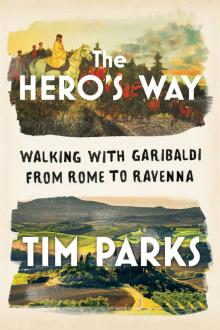 The Hero's Way
The Hero's Way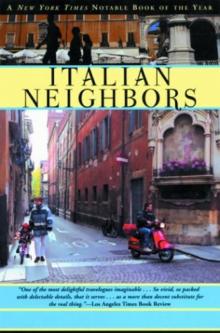 Italian Neighbors
Italian Neighbors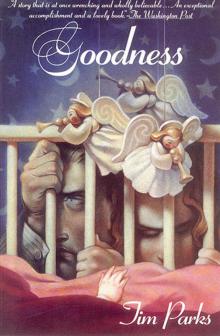 Goodness
Goodness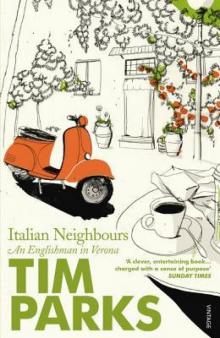 Italian Neighbours_An Englishman in Verona
Italian Neighbours_An Englishman in Verona Italian Neighbours
Italian Neighbours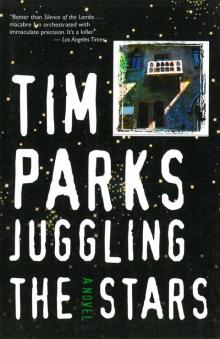 Juggling the Stars
Juggling the Stars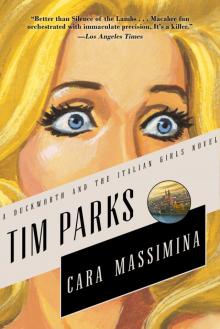 Cara Massimina
Cara Massimina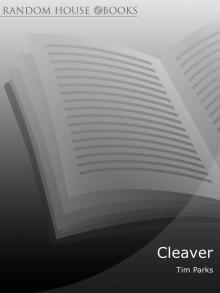 Cleaver
Cleaver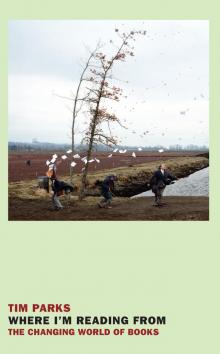 Where I'm Reading From
Where I'm Reading From Dreams of Rivers and Seas
Dreams of Rivers and Seas The Fighter
The Fighter In Extremis
In Extremis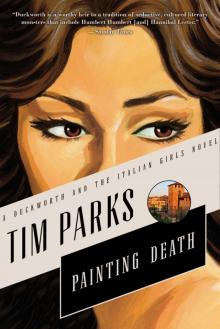 Painting Death
Painting Death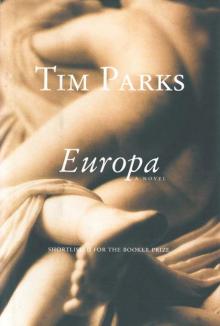 Europa
Europa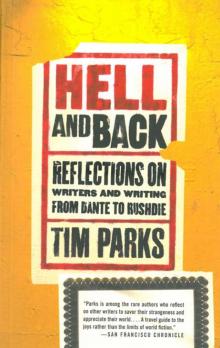 Hell and Back
Hell and Back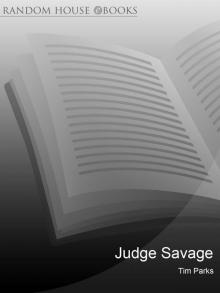 Judge Savage
Judge Savage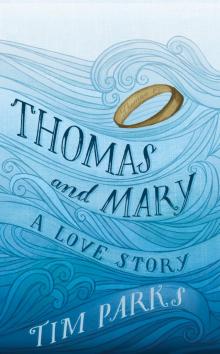 Thomas and Mary
Thomas and Mary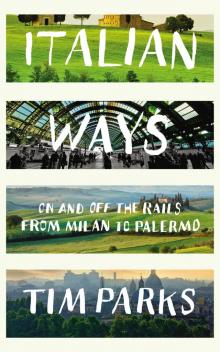 Italian Ways
Italian Ways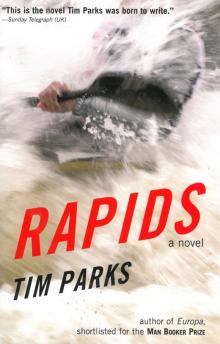 Rapids
Rapids Mimi's Ghost
Mimi's Ghost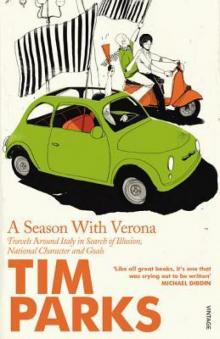 A Season With Verona
A Season With Verona Teach Us to Sit Still
Teach Us to Sit Still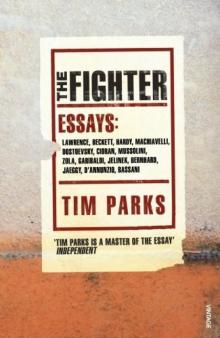 The Fighter_Literary Essays
The Fighter_Literary Essays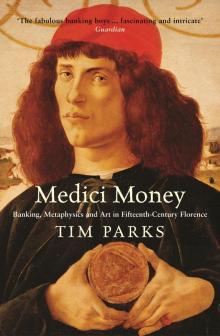 Medici Money
Medici Money